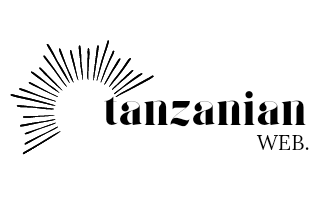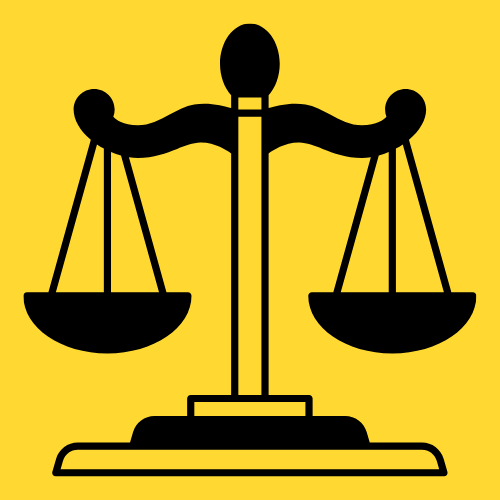“300”, Aptitude Test
Questions and Answers for the Tutorial and Assistant
Lecturer (Law)– UDSM,
UDOM, MZUMBE, TPSC, and MUST.
ABSTRACT
This document contains 300 multiple-choice
questions and answers designed to help candidates prepare for online aptitude
tests for the position of Assistant Lecturer – Law. It covers key areas such as
legal knowledge, teaching methodology, student assessment, academic ethics,
legal research, and community engagement. The questions reflect the duties and
responsibilities commonly required across Tanzania universities. This document
is specifically intended for use by candidates applying to the University of
Dar es Salaam (UDSM), University of Dodoma (UDOM), Mzumbe University, Tanzania Public Service
College (TPSC), and Mbeya University of Science and Technology (MUST).
Prepared by:
A lawyer stationed in Dar-es-salaam.
0628729934.
Date: June 2, 2025
Dear applicants,
This collection of questions and answers
has been carefully prepared to help all of you to understand the key areas
tested during the Tutorial and Assistant Lecturer (Law) interview. The goal is
to provide a useful, and practical study guide so you can all perform
confidently and fairly in the selection process. I wish you the best of luck,
and may this resource support you in achieving success!
Warm regards,
Johnson Yesaya Mgelwa
For Personal Use by Applicants Preparing
for Tutorial and Assistant Lecturer (Law) interview
Assistant Lecturer - Law Aptitude Test Questions
1. What is a core responsibility of a lecturer under Outcome-Based Education (OBE)?
A. Delivering content only | B. Focusing on exams | C. Ensuring students achieve competencies | D. Avoiding practical skills
C. Ensuring students achieve competencies
2. Which component is essential in a well-structured lesson plan?
A. Number of pages | B. References only | C. Learning objectives | D. Salary scale
C. Learning objectives
3. A teaching method that actively involves students through problem-solving is known as:
A. Lecture method | B. Case study method | C. Dictation | D. Repetition method
B. Case study method
4. The Bloom’s Taxonomy level that requires highest cognitive ability is:
A. Understanding | B. Application | C. Evaluation | D. Remembering
C. Evaluation
5. Which is not a reliable method of assessing students in legal education?
A. Oral exam | B. Multiple choice | C. Guessing contests | D. Take-home essay
C. Guessing contests
6. The term constructive alignment refers to:
A. Alignment of students in class | B. Linking teaching to exams | C. Aligning objectives, teaching, and assessment | D. Matching course code with content
C. Aligning objectives, teaching, and assessment
7. In a curriculum, the term NTA Level 8 refers to:
A. Certificate level | B. Ordinary Diploma | C. Bachelor's Degree | D. Secondary education
C. Bachelor's Degree
8. A marking rubric is used for:
A. Listing students | B. Penalizing students | C. Giving transparent grades | D. Monitoring lecturers
C. Giving transparent grades
9. A key characteristic of an effective law lecturer is:
A. Harshness | B. Silence | C. Ability to simplify legal concepts | D. Delivering outdated content
C. Ability to simplify legal concepts
10. The method best suited to teach principles of natural justice is:
A. Role play | B. Multiple choice | C. Practical demonstration | D. Dictation
A. Role play
11. Which of the following best defines "curriculum"?
A. Exams and tests | B. A syllabus | C. A plan for learning outcomes, content, and assessment | D. A government directive
C. A plan for learning outcomes, content, and assessment
12. What is pedagogy in teaching?
A. A subject of law | B. The study of children’s rights | C. The art and science of teaching | D. Teaching without payment
C. The art and science of teaching
13. What is the main objective of legal research?
A. Earning income | B. Memorizing statutes | C. Creating new knowledge or solving legal problems | D. Citing books
C. Creating new knowledge or solving legal problems
14. A good research question should be:
A. Long and detailed | B. Ambiguous | C. Clear and researchable | D. Based on foreign law
C. Clear and researchable
15. Teaching aids are important because they:
A. Distract students | B. Decorate the class | C. Enhance learning and understanding | D. Replace teaching
C. Enhance learning and understanding
16. A key principle of effective communication in the classroom is:
A. Use of jargon | B. Simplification | C. Complexity | D. Shouting
B. Simplification
17. When preparing for a lecture, the first step is to:
A. Print notes | B. Know student names | C. Identify objectives | D. Arrange chairs
C. Identify objectives
18. Which of the following is not part of the teaching-learning process?
A. Teaching | B. Assessment | C. Gossip | D. Feedback
C. Gossip
19. The Socratic Method in legal education emphasizes:
A. Dictation | B. Questioning and dialogue | C. Memorization | D. Silence
B. Questioning and dialogue
20. The term formative assessment means:
A. Assessment at end of semester | B. Continuous assessment during learning | C. Assessment by parents | D. Assessment after graduation
B. Continuous assessment during learning
21. Which teaching style allows students to learn through discovery and participation?
A. Authoritarian | B. Facilitative | C. Dictatorial | D. Passive
B. Facilitative
22. A key advantage of using case studies in law lectures is:
A. Time-saving | B. Promoting memorization | C. Enhancing analytical thinking | D. Avoiding interaction
C. Enhancing analytical thinking
23. The abbreviation TPSC stands for:
A. Tanzania Professional Services Council | B. Tanzania Police Services Commission | C. Tanzania Public Service College | D. Tanzania Parliamentary Standing Committee
C. Tanzania Public Service College
24. Which is a characteristic of a good legal researcher?
A. Biased approach | B. Impatient | C. Objectivity | D. Plagiarism
C. Objectivity
25. An effective way to improve student engagement is:
A. Using only PowerPoint | B. Encouraging questions and participation | C. Speaking fast | D. Avoiding discussions
B. Encouraging questions and participation
26. The main aim of teaching is to:
A. Finish syllabus | B. Impose views | C. Facilitate learning | D. Punish students
C. Facilitate learning
27. Which of the following is a legal citation style?
A. APA | B. Harvard | C. OSCOLA | D. Chicago
C. OSCOLA
28. When supervising students’ projects, the lecturer should focus on:
A. Grammar only | B. Critical thinking and originality | C. Attendance | D. Font size
B. Critical thinking and originality
29. An outcome-based curriculum emphasizes:
A. Quantity of content | B. Time spent | C. Results in student learning | D. Lecturer popularity
C. Results in student learning
30. A reliable method of assessing legal writing skills is:
A. Memorization test | B. Case presentation | C. Essay writing | D. Drawing
C. Essay writing
31. Which of the following improves classroom management?
A. Ignoring student behavior | B. Clear rules and expectations | C. Dictating notes | D. Avoiding communication
B. Clear rules and expectations
32. The best way to start a new legal topic in class is:
A. Giving a test | B. Giving background and relevance | C. Giving homework | D. Jumping to case law
B. Giving background and relevance
33. What is the primary purpose of student assessment?
A. Ranking students | B. Recording scores | C. Measuring learning | D. Creating pressure
C. Measuring learning
34. A curriculum is approved and monitored by:
A. Parents | B. The teacher alone | C. Regulatory bodies like NACTVET | D. Students
C. Regulatory bodies like NACTVET
35. Summative assessment is conducted:
A. During class | B. Randomly | C. At the end of a course/unit | D. At student’s request
C. At the end of a course/unit
36. Legal research methodology includes:
A. Interviewing only | B. Copying articles | C. Doctrinal and empirical methods | D. Note writing
C. Doctrinal and empirical methods
37. The principle of academic integrity emphasizes:
A. Copy-pasting | B. Plagiarism | C. Original work | D. Guesswork
C. Original work
38. The most effective method of feedback is:
A. Written and timely | B. Avoided | C. Verbal only | D. Delayed
A. Written and timely
39. Teaching ethics in law requires:
A. Avoidance of real cases | B. Focus on foreign law | C. Reference to professional conduct rules | D. Teaching politics
C. Reference to professional conduct rules
40. In curriculum development, stakeholders include:
A. Only lecturers | B. Only government | C. Employers, students, institutions | D. Only students
C. Employers, students, institutions
41. Case law is best used in class to:
A. Confuse students | B. Reinforce legal principles | C. Replace textbooks | D. Delay learning
B. Reinforce legal principles
42. The purpose of setting learning outcomes is to:
A. Reduce time | B. Increase student fear | C. Guide teaching and assessment | D. Justify payment
C. Guide teaching and assessment
43. Which of the following is an example of continuous assessment?
A. End of year exam | B. Class project | C. Graduation | D. Class attendance
B. Class project
44. Empirical research in law includes:
A. Reading statutes only | B. Collecting data from real-life situations | C. Watching videos | D. Dictating notes
B. Collecting data from real-life situations
45. A good classroom climate promotes:
A. Fear | B. Silence | C. Learning | D. Competition
C. Learning
46. What is the major benefit of seminars in legal education?
A. Eating snacks | B. Enhancing practical understanding | C. Avoiding assignments | D. Reducing lecture time
B. Enhancing practical understanding
47. Which teaching tool is best for visual learners?
A. Casebooks | B. Podcasts | C. Charts and diagrams | D. Dictation
C. Charts and diagrams
48. Effective supervision of projects requires:
A. Delays | B. Clear guidance and regular reviews | C. Ignorance | D. Avoidance
B. Clear guidance and regular reviews
49. Which act governs higher education in Tanzania?
A. The Penal Code | B. The Local Government Act | C. The Universities Act | D. The Marriage Act
C. The Universities Act
50. A Bachelor’s degree in the NTA framework is at level:
A. 6 | B. 7 | C. 8 | D. 9
C. 8
📘 Get the Full Aptitude Test PDF (Questions 51–300)
You’ve just accessed the first 50 questions. The full set of 300 expertly prepared aptitude test questions for the Tutorial and Assistant Lecturer (Law) position is available for download in a PDF format
To receive the full PDF (Questions 51–300), please make a payment of Tsh 20,000 to the LIPA number below:
After payment, please send a text message with the words “Tutorial or Assistant Lecturer (Law)” to:
⚠️ Important Notice
- The PDF is watermarked and protected for personal use only.
- Redistribution, sharing, screenshotting, or copying the contents is strictly prohibited.
- Legal action may be taken against the misuse of this material.
Thank you for supporting quality content. Best of luck in your interview preparation!


%20(10).png)





0 Comments
PLACE YOUR COMMENT HERE
WARNING: DO NOT USE ABUSIVE LANGUAGE BECAUSE IT IS AGAINST THE LAW.
THE COMMENTS OF OUR READERS IS NOT OUR RESPONSIBILITY.